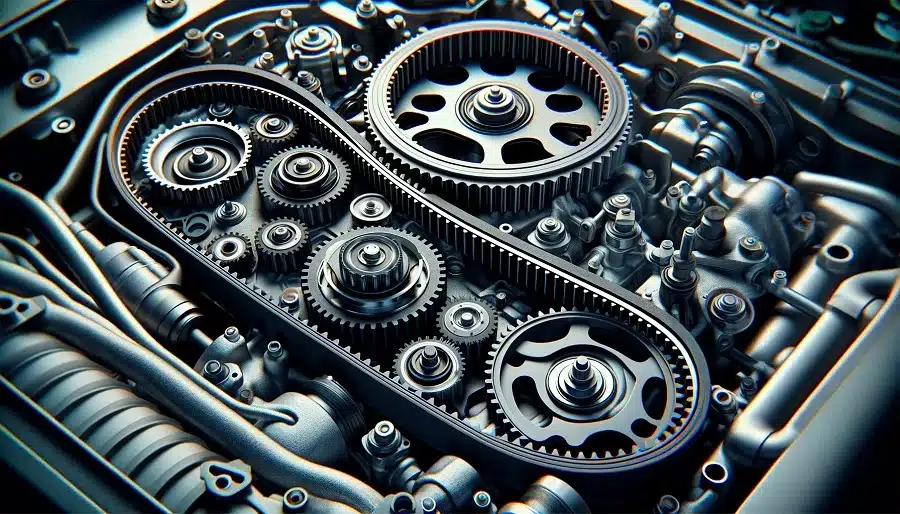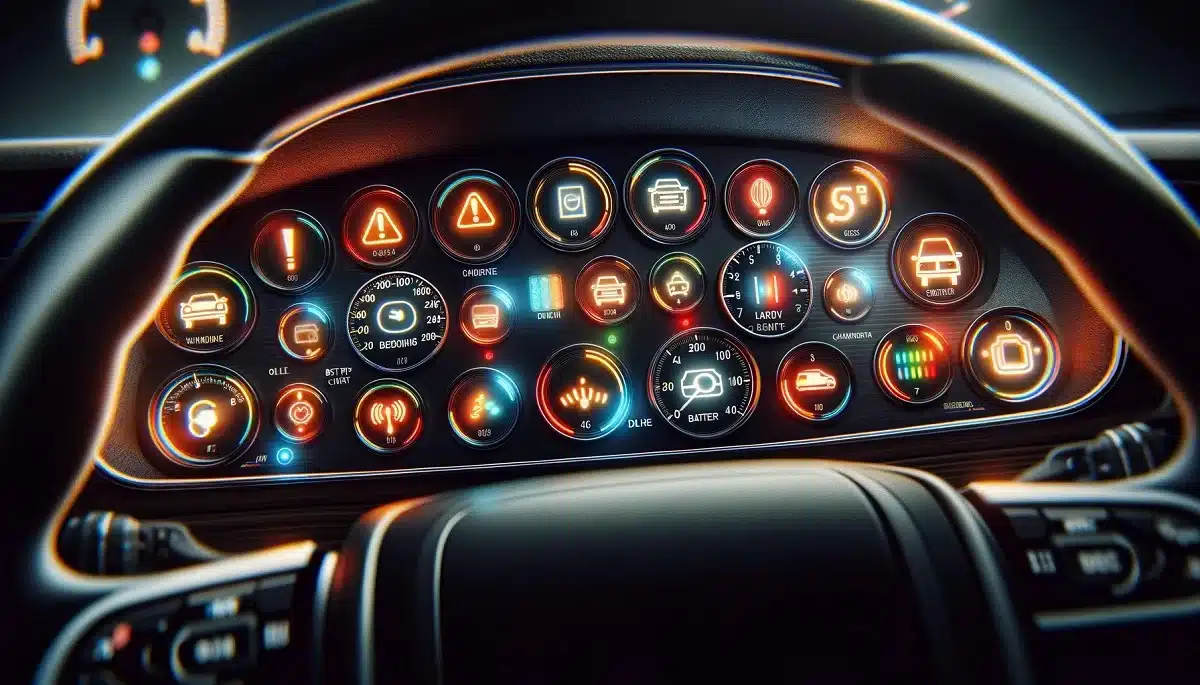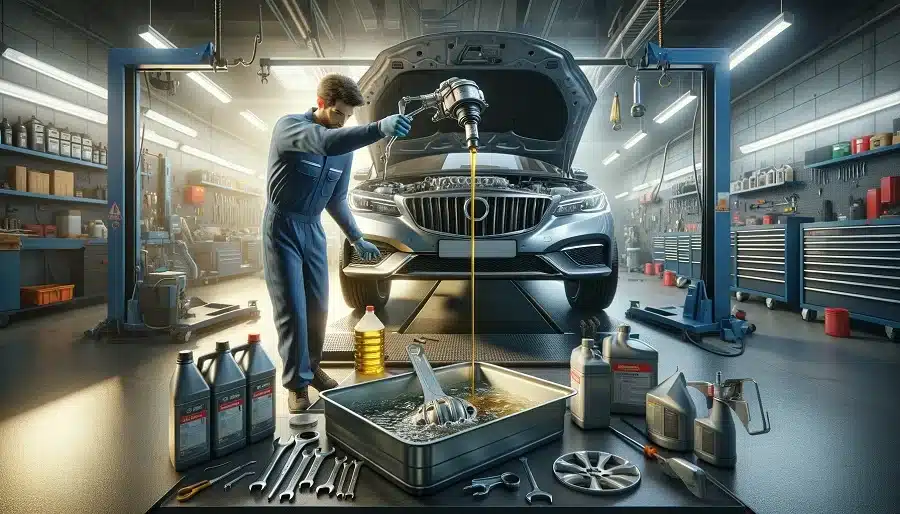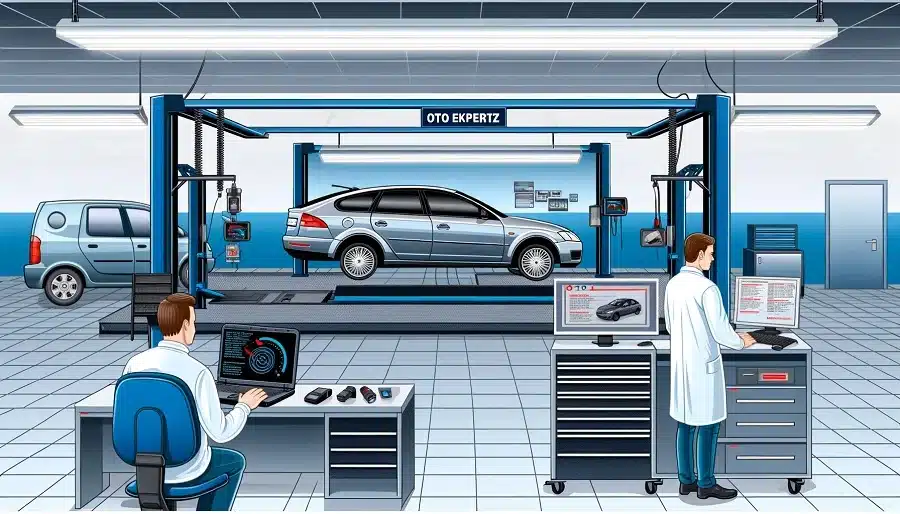The timing belt is one of the most critical components of vehicle engines and is vital for the proper operation of the engine. So, what is a timing belt, what does it do, and why does it break? Let’s delve into the answers to these questions in detail.

What is a Timing Belt and What Does It Do?
The timing belt is a crucial part that ensures the synchronization of the engine, connecting the crankshaft to the camshaft. For the engine to operate smoothly, the timing of these two parts needs to be perfect, and the timing belt undertakes this task. Additionally, in some vehicles, the timing belt also drives the water pump, thereby ensuring the engine is cooled.
Why Does the Timing Belt Break?
There are several common reasons for the timing belt to break:
- Wear and Tear: Like other vehicle parts, the timing belt wears out and deteriorates over time. Therefore, it is essential to replace it at the intervals recommended by the manufacturer.
- Incorrect Installation: Improper installation of the timing belt, over-tensioning, or leaving it too loose can lead to premature failures.
- Low-Quality Material: Using low-quality or aftermarket products can shorten the life of the belt and lead to sudden breaks.
What Happens If the Timing Belt Breaks?
When the timing belt breaks, the engine stops suddenly, and serious damage can occur. In interference engines, the pistons can collide with the valves, leading to significant engine failures and expensive repairs.
Why Does the Timing Belt Make Noise?
Noise from the timing belt is usually due to the belt being worn or loose. However, noise can also stem from issues with the tensioner pulley or the water pump. If you hear a noise coming from the area of the timing belt, you should consult a specialist as soon as possible.
Why Does the Timing Belt Slip?
The main reasons for timing belt slippage include:
- Service Life: Like every part, the timing belt has a service life. Manufacturers recommend replacing the belt at specific mileage intervals or time periods.
- Wear and Tear: Over time, the belt loses its elasticity, becomes rigid, and can crack. This can lead to the belt slipping off the gears.
- Tension Settings: Incorrect tension settings can cause the belt to be either too tight or too loose. Both situations can lead to slippage.
When Should the Timing Belt Be Changed?
The timing belt replacement timing depends on the vehicle manufacturer’s recommendations and the visual inspection of the belt. If wear, cracks, or hardening are observed, the belt needs to be replaced. Additionally, replacement is advised after reaching a certain mileage or after a specific period.
How Do We Know When the Timing Belt Is Worn Out?
To understand the condition of the timing belt, pay attention to the following signs:
- Visual Inspection: Signs like cracks, wear marks, and separation of layers on the belt.
- Stiffness: A reduction in the belt’s flexibility and it becoming rigid.
- Noise: Unusual noises can be an indicator that the belt is not functioning correctly.
Maintaining and timely replacing your engine’s timing belt is crucial. Therefore, seeking assistance from an expert for your vehicle’s maintenance and adhering to recommended maintenance intervals is the best approach. Remember, timely replacement of the timing belt can prevent potential engine failure and save you from higher costs in the long run.






